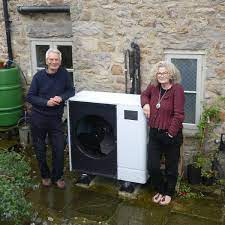Installing a Ground Source Heat Pump
Installing a ground source heat pump is an eco-accommodating decision for heating and cooling your home. The framework pumps heat starting with one area then onto the next, which saves you energy and cash on fuel bills. The framework also eliminates the requirement for electrical or natural gas heating, making it an eco-accommodating decision that decreases emanations of carbon dioxide. You can learn more about the advantages of ground source heat pump by visiting the International Ground Source Heat Pump Association or Geothermal Heat Pump Consortium sites.
To apply for the rebate, mortgage holders should initially track down an approved contractor. The IGSHA maintains a rundown of accredited contractors. In addition, the U.S. Department of Energy has a database of state motivators for energy effectiveness and renewable innovations. Moreover, ENERGY STAR has given information on federal tax motivations for proficient heating and cooling frameworks. Nonetheless, heating and cooling costs vary greatly contingent upon factors like structure development, way of life, and energy source. To guarantee that your heat pump is installed accurately and meets the necessities of the rebate program, you ought to contact a BED-approved contractor.
Throughout the colder time of year, the dirt remains relatively warm. The temperature at profundities of several meters is generally equivalent to the average annual air temperature in the picked location. In addition, the heat from the ground can be all the more really recovered throughout the colder time of year. As the amount of put away heat in thermal banks increases, ground source heat pumps are more proficient. Ultimately, this makes the ground source heat pump a great decision for heating and cooling needs. Regardless of whether your house isn't located in a geothermal problem area, it very well may be utilized in any part of the United States.
The most common way of installing a ground source heat pump includes three separate advances. In the first place, you want a heat exchanger. The heat exchanger is a length of underground tubing that transfers heat from the ground to the heat pump. When the heat pump is done, it concentrates the heat into a gathering unit and releases it through the air channels of your structure. Alternatively, you can switch the interaction to cool your structure.
When installed, the ground source heat pump will change over the warm air from the ground into high temp water for heating and cooling. The heat pump's mechanical parts are totally sealed and are not powerless to damage from rain, snow, or different components. Besides, it can also give heating and cooling in various areas of a large structure. For example, the ground source heat pump can be utilized to control the temperature of a particular room or zone, giving hot air to that area and cool air to the rest. In addition to heating and cooling, the framework can also give homegrown boiling water.
Whenever installed accurately, a ground source heat pump can be an exceptionally energy-effective alternative to a standard home heating framework. They are also capable of working as an air conditioner during the late spring. Notwithstanding, it is important to take note of that a ground source heat pump framework can be two times as costly as a conventional heating framework. The main downfall of this kind of framework is that it requires outside funneling. The energy it saves is substantial compared to the energy utilized by conventional heating and cooling frameworks.



Comments
Post a Comment